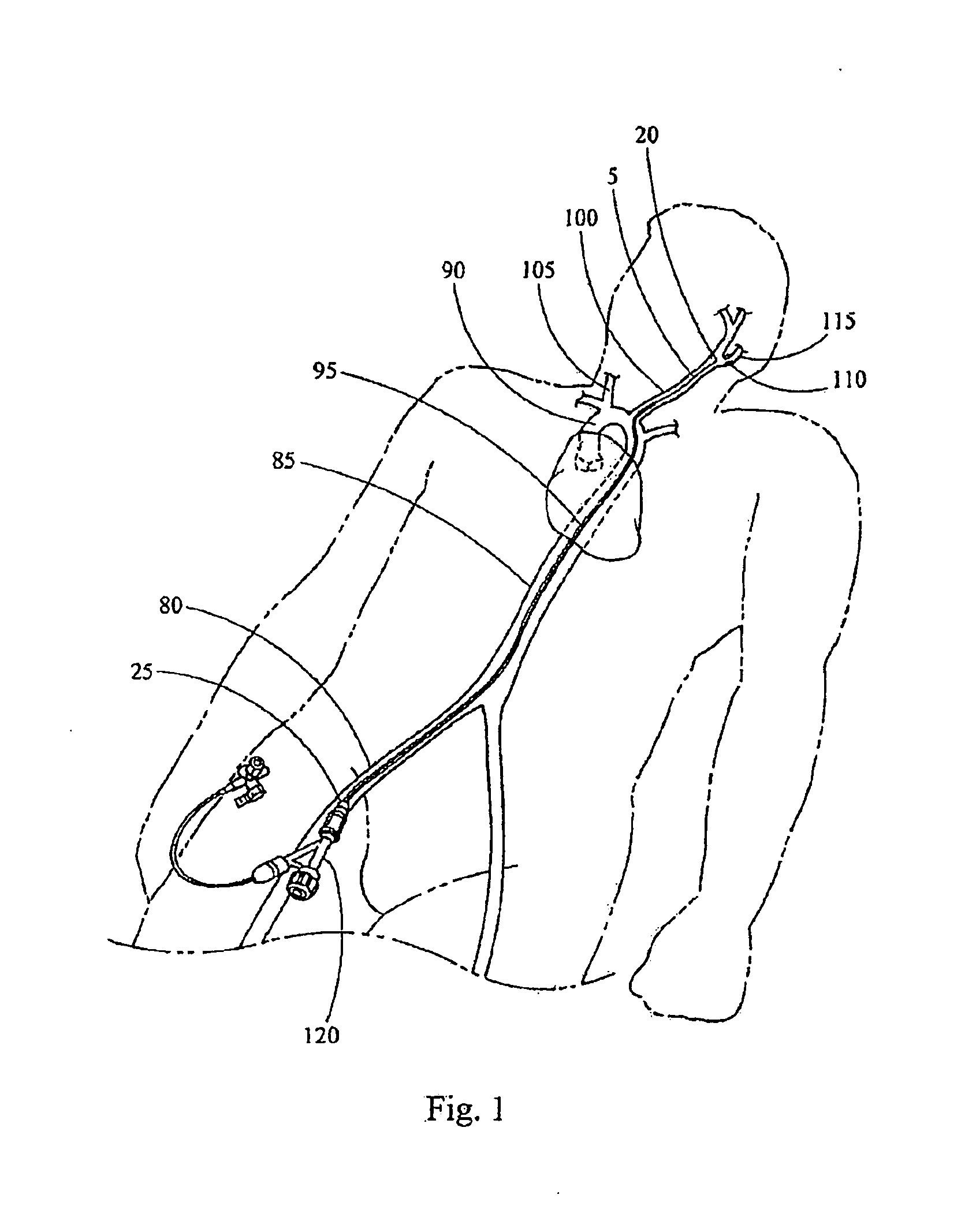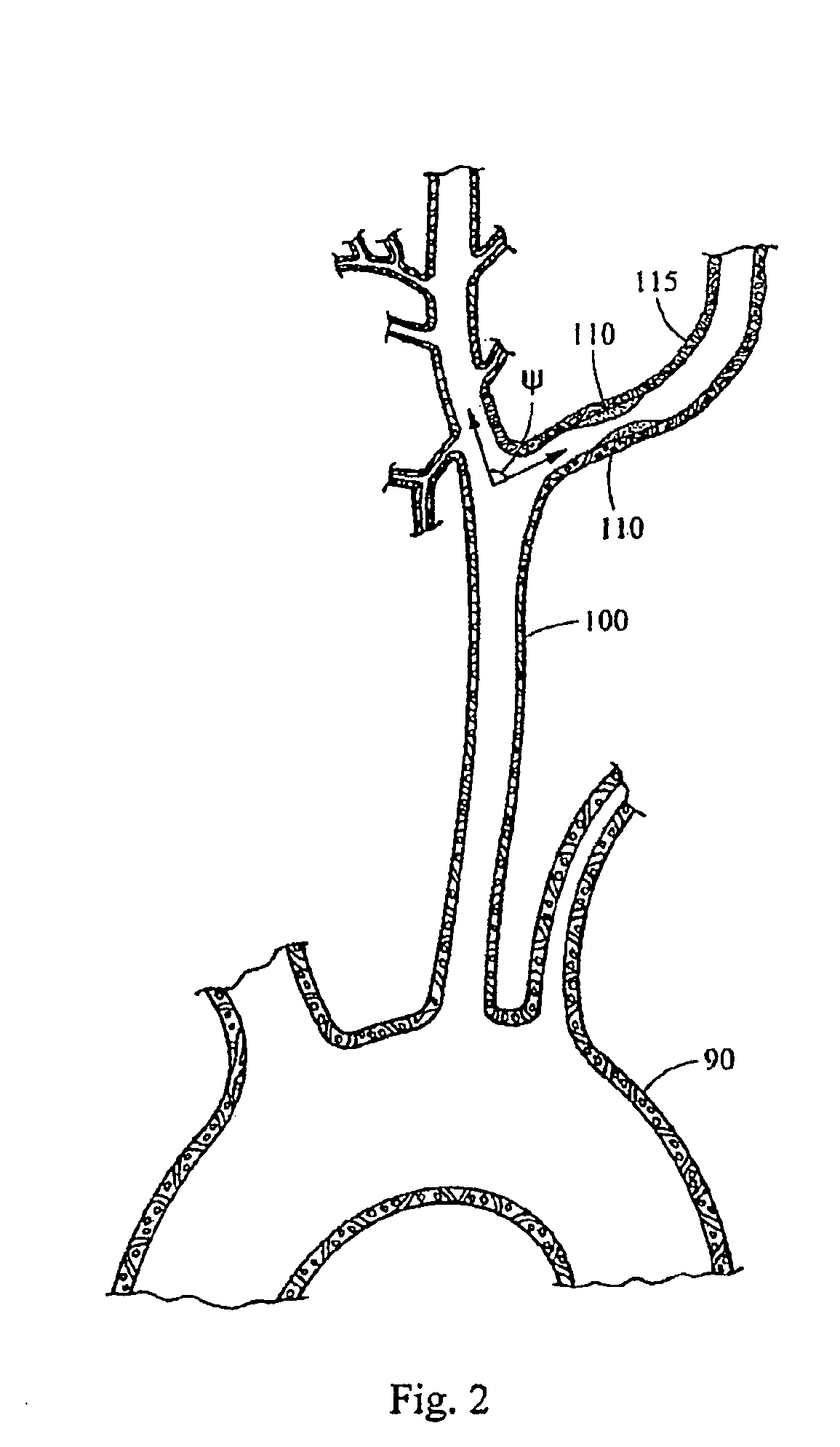Delivery system for endoluminal devices
a technology of endoluminal devices and delivery systems, which is applied in the field of intraluminal medical devices introduction or delivery systems, can solve the problems of inability to place embolic protection devices, inability to accurately guide, and difficulty in reaching and crossing narrowed vessels, etc., and achieves the effects of convenient and fast delivery, convenient use, and superior torque control and flexibility
- Summary
- Abstract
- Description
- Claims
- Application Information
AI Technical Summary
Benefits of technology
Problems solved by technology
Method used
Image
Examples
Embodiment Construction
[0028]Described herein is an intraluminal delivery system 5 that may be suitable for directing and delivering an embolic protection device 10 to a site distal of a stenosis in a tortuous vessel. The delivery system 5 may advantageously allow carotid stenting procedures to be carried out under a wider range of circumstances.
[0029]For example, the intraluminal delivery system 5 may be used to deliver an embolic protection device 10 to a treatment site (e.g., a stenosed region) in a tortuous carotid artery. Typically, to access a carotid artery, a percutaneous incision is made in the femoral artery 80 and an intraluminal medical device is advanced through the aorta 85 and the aortic arch 90. This access route is shown schematically in FIG. 1. Branching from the aortic arch 90 are the left common carotid artery 100 and the right common carotid artery 105, which supply blood to the head and neck, as shown in FIG. 2. A stenosed region 110 is shown in the internal carotid artery 115 extend...
PUM
 Login to View More
Login to View More Abstract
Description
Claims
Application Information
 Login to View More
Login to View More - R&D
- Intellectual Property
- Life Sciences
- Materials
- Tech Scout
- Unparalleled Data Quality
- Higher Quality Content
- 60% Fewer Hallucinations
Browse by: Latest US Patents, China's latest patents, Technical Efficacy Thesaurus, Application Domain, Technology Topic, Popular Technical Reports.
© 2025 PatSnap. All rights reserved.Legal|Privacy policy|Modern Slavery Act Transparency Statement|Sitemap|About US| Contact US: help@patsnap.com



